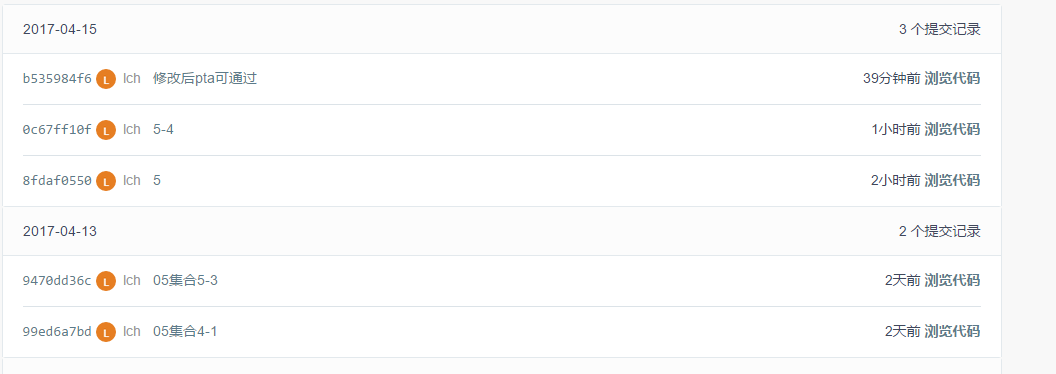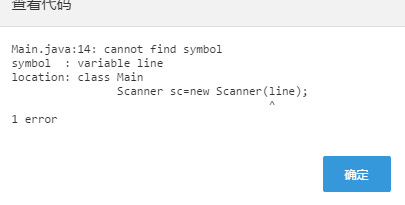201521123002《Java程序设计》第8周学习总结
1. 本周学习总结
1.1 以你喜欢的方式(思维导图或其他)归纳总结集合与泛型相关内容。

2. 书面作业
本次作业题集集合
1.List中指定元素的删除(题目4-1)
1.1 实验总结

1.提交函数实验题时只要提交编写的函数即可,不然会出现编译错误
2.出现了一次答案错误,点击查看当时的代码,发现错误点为误用"=="比较字符串。
2.统计文字中的单词数量并按出现次数排序(题目5-3)
2.1 伪代码(简单写出大体步骤)
while(has next word)
if(the map doesn't contains the word)
put the word into the map
else
get the value in the map to add 1
sort the map
printout the result
1.用HashMap先建立一个映射关系,
关键处
if(cnt==null){
map.put(key, 1);
}else{
map.put(key, cnt+1);
}
2.然后转化为集合用sort排序编写compare
关键处
public int compare(Entry<String, Integer> o1, Entry<String, Integer> o2) {
// TODO Auto-generated method stub
int x=o2.getValue()-o1.getValue();
if(x!=0)
return x;
else
return o1.getKey().compareTo(o2.getKey());
}
3.最后输出
2.2 实验总结

1.可以看到出现了编译错误用来是pta识别不了jdk8的语法,所以之后提交的时候不能用jdk8的语法。
2.在控制台输入的时候不能用line
3.倒排索引(题目5-4)
3.1 截图你的提交结果(出现学号)

3.2 伪代码(简单写出大体步骤)
1.建索引 Map<String,Set<Integer>> map=new TreeMap<String,Set<Integer>>();
2.分为只有一个单词和多个单词来查找
create a map to keep the reference
printout the reference
search the keywords
create an Collection to keep the result
if(the Collection is empty)
output "found 0 results"
else
output Collection
3.3 实验总结
这题还是比较难的,用到了很多的种集合类型,做完这题收获还是比较大的,学会用s.split(" "),但是我对自己查找单词的算法不是很满意,感觉有点冗长。算法啊算法。
4.Stream与Lambda
编写一个Student类,属性为:
private Long id;
private String name;
private int age;
private Gender gender;//枚举类型
private boolean joinsACM; //是否参加过ACM比赛
创建一集合对象,如List,内有若干Student对象用于后面的测试。
4.1 使用传统方法编写一个方法,将id>10,name为zhang, age>20, gender为女,参加过ACM比赛的学生筛选出来,放入新的集合。在main中调用,然后输出结果。


结果:

4.2 使用java8中的stream(), filter(), collect()编写功能同4.1的函数,并测试。
public static List<Student> Search(List<Student> list){
List<Student> t= list.stream().filter(e->e.getId()>10l&&e.getName().equals("zhang")
&&e.getGender().equals(Gender.女)&&e.isJoinsACM()&&e.getAge()>20).collect(Collectors.toList());
return t;
}
功能一样,结果一样。
4.3 构建测试集合的时候,除了正常的Student对象,再往集合中添加一些null,然后重新改写4.2,使其不出现异常。
public static List<Student> Search(List<Student> list){
List<Student> t= list.stream().filter(e->e != null&&e.getId()>10l&&e.getName().equals("zhang")
&&e.getGender().equals(Gender.女)&&e.isJoinsACM()&&e.getAge()>20).collect(Collectors.toList());
return t;
}
5.泛型类:GeneralStack(题目5-5)
5.1 截图你的提交结果(出现学号)

5.2 GeneralStack接口的代码
interface GeneralStack <T>{
T push( T item);
T pop();
T peek();
public boolean empty();
public int size();
}
5.3 结合本题,说明泛型有什么好处
从本题来看,我们知道以前所定义IntegerStack接口,只能用于存放Integer类型的数据。然而对于栈来说,不管内部存放的是什么类型的数据,基本操作与元素的具体类型无关。这时就需要用到泛型,这样就不用因为类的不同而去重复写一样的代码。
6.泛型方法
基础参考文件GenericMain,在此文件上进行修改。
6.1 编写方法max,该方法可以返回List中所有元素的最大值。List中的元素必须实现Comparable接口。编写的max方法需使得String max = max(strList)可以运行成功,其中strList为List<String>类型。也能使得Integer maxInt = max(intList);运行成功,其中intList为List<Integer>类型。
public static <T extends Comparable> T Max(List<T> list){
T max= list.get(0);
for(T e:list){
if(e.compareTo(max)>0)
max=e;
}
return max;
}

3. 使用码云管理Java代码







